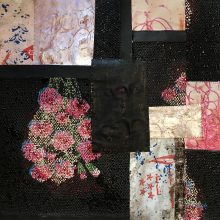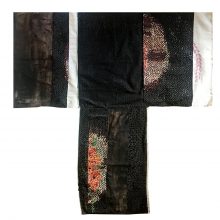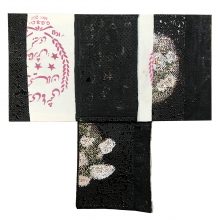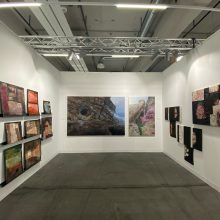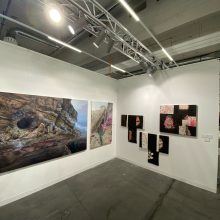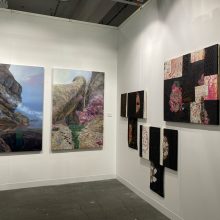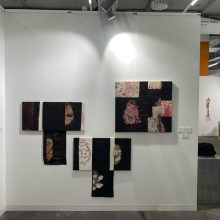An Empty Tablecloth
Samira Hodaei
It has been some ten years since Samira Hodaei migrated. She is now living between Berlin and Tehran. She spent her childhood in the oil-rich province of Khuzestan. In the recent period of her career, she has been focusing on examining the huge gap between the golden dream of oil and the reality of the corruption it brings. In her work, Samira recreates the luncheon cloth that Iranian grandmothers spread with good wishes and blessings for their families. With the help of the same women and with a similar approach to Majid, yet using more flexible materials, she sews, layer by layer, cashmere luncheon cloths and sacks of rice, the predominant staple food of Iranians, and covers them with paint and bitumen (a substance produced through the distillation of crude oil). Between these layers, she conceals her childhood memories and attachments from the eyes of the audience. By placing her self-portrait and sewing together fragments from these forty years, she tries to get through her complex and layered narrative, both to alleviate her sense of nostalgia, and, similar to a therapist, she seeks to mend her relationship with what is really out there by reconsidering her childhood aspirations and those of her generation.
